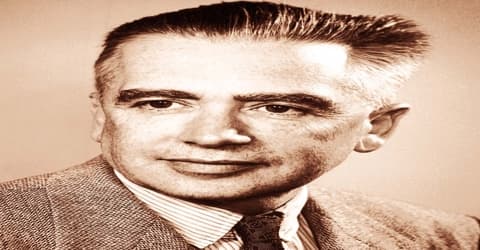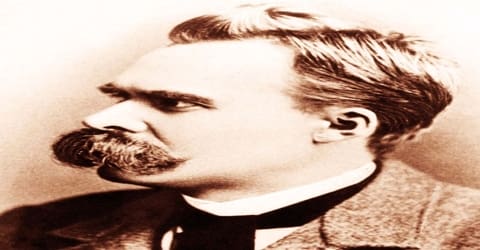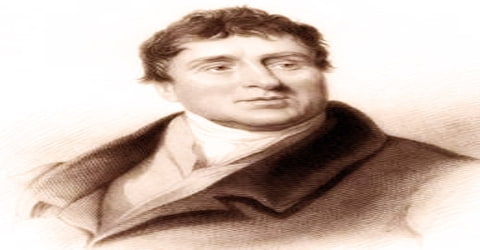Biography of Emilio Segrè
Emilio Segrè – Italian-American physicist.
Name: Emilio Gino Segrè
Date of Birth: 1 February 1905
Place of Birth: Tivoli, Italy
Date of Death: 22 April 1989 (aged 84)
Place of Death: Lafayette, California, United States
Occupation: Physicists
Father: Giuseppe Segrè
Mother: Amelia Susanna Treves
Spouse/Ex: Elfriede Spiro (m. 1936-1970), Rosa Mines (m. 1972)
Early Life

An Italian-born American physicist who was co-winner, with Owen Chamberlain of the United States, of the Nobel Prize for Physics in 1959 for the discovery of the antiproton, an antiparticle having the same mass as a proton but opposite in electrical charge, Emilio Gino Segrè was born into a Sephardic Jewish family in Tivoli, near Rome, on 1 February 1905, the son of Giuseppe Segrè, a businessman who owned a paper mill, and Amelia Susanna Treves. Segrè found in April 1944 that Thin Man, the proposed plutonium gun-type nuclear weapon, would not work because of the presence of plutonium-240 impurities.
Segrè served ‘University of Rome’ as an assistant professor of physics and eventually became one of the Via Panisperna boys. For a couple of years, he served ‘The University of Palermo’ as Director of the Physics laboratory. He visited ‘Berkeley Radiation Laboratory’ in Berkeley, California, following which a molybdenum strip from the lab’s cyclotron deflector was sent to him that was discharging anomalistic type of radioactivity. Segrè conducted a thorough analysis and proved that a part of such radiation was being generated by an artificially synthesized element dubbed as technetium, thus discovering the new chemical element. After being dismissed from ‘University of Palermo’ by Benito Mussolini’s fascist government that passed the anti-Semitic laws restricting Jews from holding university positions, he joined ‘Berkeley Radiation Laboratory’ as Research Assistant. There he aided in discovering the astatine element and also the plutonium-239 isotope that was utilized in the development of Fat man atomic bomb, which was dropped on Nagasaki, Japan. He headed ‘Manhattan Project’ at the ‘Los Alamos National Laboratory’ from 1943 to 1946. Meanwhile, in 1944 he became a naturalized citizen of America. Thereafter for over two decades, he served as professor of physics and history of science at ‘The University of California’, Berkeley.
Segrè was also active as a photographer and took many photos documenting events and people in the history of modern science, which were donated to the American Institute of Physics after his death. The American Institute of Physics named its photographic archive of physics history in his honor.
Childhood, Family and Educational Life
Emilio Segrè, in full Emilio Gino Segrè, was born on February 1, 1905, in Tivoli, Italy, as the youngest of three sons of Giuseppe Segrè and Amelia Susanna Treves. His father owned a paper mill. He had two older brothers, Angelo and Marco. He attended ginnasio in Tivoli, and thereafter ginnasio and Liceo in Rome where the family relocated in 1917.
Born into an industrial family, Emilio Segrè had an early interest in mathematics and physics that was nurtured by his uncle, Claudio Segrè, who was a mining engineer. He was privately educated in addition to attending public school in Tivoli and Rome. In July 1922 he completed graduation from Ginnasio Mamiani, Rome. He then joined ‘University of Rome La Sapienza’ to study engineering.
In 1927 Segrè got to meet physics professors Enrico Fermi and Franco Rasetti, who were in search of brilliant students. Segrè also attended lectures of eminent physicists at Volta Conference in Como in September 1927. With the help of Orso Mario Corbino, director of the Institute of Physics at ‘University of Rome La Sapienza’, he took transfer to physics. He joined a group of Enrico Fermi that included other notable students like Ettore Majorana and Edoardo Amaldi. The group soon earned the nickname ‘Via Panisperna boys’, named after the street where the physics institute was situated. With the help of the director of the Institute of Physics, Orso Mario Corbino, Segrè was able to transfer to physics, and, studying under Fermi, earned his Laurea degree in July 1928, with a thesis on “Anomalous Dispersion and Magnetic Rotation”.
After a stint in the Italian Army from 1928 to 1929, during which he was a commissioned as a second lieutenant in the antiaircraft artillery, Segrè returned to the laboratory on Via Panisperna. He published his first article, which summarised his thesis, “On anomalous dispersion in mercury and in lithium”, jointly with Edoardo Amaldi in 1928, and another article with him the following year on the Raman Effect. With the aid of Fermi, Segrè received a Rockefeller Foundation fellowship and chose to study under German physicist Otto Stern in Hamburg, Germany.
Personal Life
In 1934, Emilio Gino Segrè met Elfriede Spiro, a Jewish woman whose family had come from Ostrowo in West Prussia, but had fled to Breslau when that part of Prussia became part of Poland after World War I. The two were married at the Great Synagogue of Rome on 2 February 1936. He agreed with the rabbi to spend the minimal amount on the wedding, giving the balance of what would be spent on a luxury wedding to Jewish refugees from Germany. The rabbi managed to give them many of the trappings of a luxury wedding anyway. The couple had three children: Claudio, born in 1937, Amelia Gertrude Allegra, born in 1937, and Fausta Irene, born in 1945.
After the death of Elfriede in October 1970, Segrè got married to Rosa Mines in February 1972.
Segrè was an enthusiastic photographer and many of his photographs that document events and people with regard to the history of modern science were given to ‘American Institute of Physics’ after his demise. The photographic archive of physics history of the institute is named in his honor.
Career and Works
In 1932 Emilio Gino Segrè was appointed an assistant professor of physics at the University of Rome, and two years later he participated in neutron experiments directed by Fermi, in which many elements, including uranium, were bombarded with neutrons, and elements heavier than uranium were created. In 1935 they discovered slow neutrons, which have properties important to the operation of nuclear reactors.
In 1936 Segrè joined ‘The University of Palermo’ where he served as a professor of physics and also became director of the Physics Institute. That year he visited ‘Berkeley Radiation Laboratory’ founded by eminent American nuclear scientist Ernest O. Lawrence. There he got introduced to many American scientists like Franz Kurie and Edwin McMillan. He was fascinated by the radioactive scrap metal which was once used in the lab’s particle accelerator, cyclotron discovered by Lawrence.
Segrè was intrigued by the radioactive scrap metal that had once been part of the laboratory’s cyclotron. In Palermo, this was found to contain a number of radioactive isotopes. In February 1937, Lawrence sent him a molybdenum strip that was emitting anomalous forms of radioactivity. Segrè enlisted Perrier’s help to subject the strip to careful chemical and theoretical analysis, and they were able to prove that some of the radiation was being produced by a previously unknown element. In 1947 they named it technetium, as it was the first artificially synthesized chemical element.
Following the passing of anti-Semitic laws by Benito Mussolini’s fascist government restricting Jews from holding university positions, Segrè was dismissed from ‘University of Palermo’. He accepted the offer of Lawrence to work at ‘Berkeley Radiation Laboratory’ as a research assistant. There he isolated metastable isotope technetium-99m along with with Glenn Seaborg, which is at present annually applied in around 10 million medical diagnostic methods. He collaborated with Chien-Shiung Wu and Alexander Langsdorf, Jr. to discover the neutron-absorbing nuclear poison xenon-135 that has an important effect on nuclear reactor operation. Segrè and his associates discovered the element astatine in 1940, and later, with another group, he discovered the isotope plutonium-239, which he found to be fissionable, much like uranium-235. He along with Kenneth Ross MacKenzie succeeded in isolating a new element, presently known as astatine. Collaborating with Edwin McMillan, Arthur C. Wahl, Joseph W. Kennedy, and Glenn Seaborg, he created plutonium-239, primary fissile isotope applied in the development of nuclear weapons, in the 60-inch cyclotron of the lab in December 1940.
The Japanese attack on Pearl Harbor in December 1941 and the subsequent United States declaration of war upon Italy rendered Segrè an enemy alien and cut him off from communication with his parents. Physicists began leaving the Radiation Laboratory to do war work, and Raymond T. Birge asked him to teach classes to the remaining students. This provided a useful supplement to Segrè’s income, and he established important friendships and professional associations with some of these students, who included Owen Chamberlain and Clyde Wiegand. In late 1942, Oppenheimer asked Segrè to join the Manhattan Project at its Los Alamos Laboratory. Segrè became the head of the laboratory’s P-5 (Radioactivity) Group, which formed part of Robert Bacher’s P (Experimental Physics) Division. For security reasons, he was given the cover name of Earl Seaman. He moved to Los Alamos with his family in June 1943.
In April 1944 Segrè discovered that the suggested plutonium gun-type nuclear weapon, ‘Thin Man’ would not function due to the existence of plutonium-240 impurities. R-4, the then group of Segrè was assigned to measure gamma radiation from the Trinity nuclear test that was conducted on July 16, 1945, by the US Army. In early 1946 Segrè returned to Berkeley and joined ‘University of California’ as Professor of Physics. Thereafter he joined ‘The University of Illinois’ at Urbana-Champaign and after working there for few years returned to ‘University of California’ Berkeley in 1952.
In 1955, using the new bevatron particle accelerator, Segrè and Chamberlain produced and identified antiprotons and thus set the stage for the discovery of many additional antiparticles. He was appointed a professor of nuclear physics at the University of Rome in 1974.
Antiprotons have become important research tools in high-energy particle physics since the invention of stochastic cooling, which makes it possible to store, concentrate, and direct antiproton beams. The Center for European Research in Nuclear Physics (CERN) built a 300 BeV proton-antiproton colliding-beam accelerator, the Super Proton Synchrotron, in the early 1980s. Fermi-lab’s colliding-beam accelerator has energies over 1 trillion electron volts (TeV) produced in the collision of beams of protons and antiprotons. CERN plans a 14 TeV machine. Slowing down antiprotons has also been accomplished and has led to the assembly of antiatoms. Antiprotons have also figured prominently in cosmology. Although speculation that galaxies made up of antiprotons, antineutrons, and positrons might exist followed the particles’ original discovery, this has not been supported either by observations of antiprotons in cosmic rays or by any convincing theory. Nevertheless, the search goes on since the big bang theory accepted by most cosmologists indicates that, at least in the first few seconds of the universe, the number of particles and antiparticles was equivalent. Proposed experiments using magnetic spectrometers placed in orbit around the earth seek to solve the mystery of antimatter.
Segrè served on the University’s powerful Budget Committee from 1961 to 1965 and was chairman of the Physics Department from 1965 to 1966. He supported Teller’s successful bid to separate the Lawrence Berkeley Laboratory from the Lawrence Livermore Laboratory in 1970. He was one of the trustees of Fermilab from 1965 to 1968. He attended its inauguration with Laura Fermi in 1974. During the 1950s, Segrè edited Fermi’s papers. He later published a biography of Fermi, Enrico Fermi: Physicist (1970). He published his own lecture notes as From X-rays to Quarks: Modern Physicists and Their Discoveries (1980) and From Falling Bodies to Radio Waves: Classical Physicists and Their Discoveries (1984). He also edited the Annual Review of Nuclear and Particle Science from 1958 to 1977 and wrote an autobiography, A Mind Always in Motion (1993), which was published posthumously.
Segrè wrote several books, including Experimental Nuclear Physics (1953), Nuclei and Particles (1964), Enrico Fermi: Physicist (1970), and two books on the history of physics, From X-rays to Quarks: Modern Physicists and Their Discoveries (1980) and From Falling Bodies to Radio Waves (1984). Shortly after winning the Nobel Prize, Segrè wrote the entry on the proton for the 1960 printing of the 14th edition of the Encyclopædia Britannica.
Death and Legacy
Emilio Gino Segrè died on April 22, 1989, from a heart attack at the age of 84 while out walking near his home in Lafayette, California, United States.
In 1993 his autobiography, A Mind Always in Motion, provided a candid personal view of physics in Rome and Berkeley. Emilio Segrè regarded himself as an outsider at the Radiation Laboratory throughout his career, although his use of its accelerators was among the most fruitful for high-energy physics. This detachment not only made him among the more successful physicist-historians of his age, it allowed him to remain aloof from the exigencies of big science and to avoid being captured by the research programs that subsume hundreds of physicists in huge collaborative experiments. It also reflected his perspective, forged in Rome in his work with Fermi, on the human importance and intellectual elegance of doing physics.
Information Source:
















